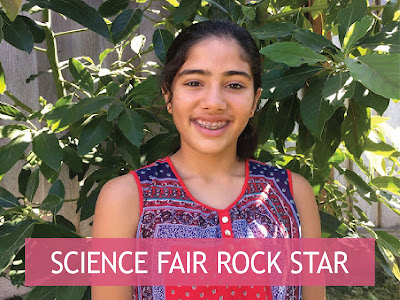High school juniors Mikayla Sharrieff, India Skinner, and Bria Snell have been in the news quite a bit in the last week, but the articles have only barely touched on what I consider to be the really exciting part of their story: these smart girls came up with an inexpensive and easy way to filter lead out of drinking water! And not only lead, but other impurities and bacteria like e. coli.
Their creative system builds on NASA Spinoff technology using specially created filtering floss made from nanofibers. A spinning fan circulates the contaminated water through the floss, which traps the unwanted particles. The clean water is then transferred to the storage container.
Their project "From H2NO to H2O" earned them a spot in the finals of the 2018 NASA Transformers Optimus Prime Spinoff Promotion and Research Challenge (OPSPARC) contest, which was created to encourage students to come up with creative uses for existing NASA technology in projects that would benefit the general public. Mikayla, India, Bria decided to turn their attention to the problem of lead-contamination in school water fountains.
Tragically, contaminated drinking water is an everyday issue for far too many students around the country, and one that hits home for these three burgeoning scientists: their school, Benjamin Banneker High School in Washington, DC, has several drinking fountains that have been taken out of commission because of concerns regarding lead contamination.
They took their idea to their mentors at the Inclusive Innovation Incubator, a technology incubator whose mission is to support entrepreneurs and businesses from underrepresented communities that provide products and services benefiting under-served communities, who gave them the encouragement and guidance they needed while building their prototype for the NASA OPSPARC contest. Their mentors' confidence is well-placed. This team of resourceful young women are the only all-black, all-female team to make it to the finals.
The winning team will be announced later this month. Winners will be invited to NASA's Goddard Space Flight Center for a two-day workshop, and a $4000 stipend to cover their expenses for the trip. But these girls are already winners! They've caught the attention of celebrities and politicians alike. The Washington, DC, mayor Muriel E. Bowser has pledged a $4000 award to help the girls continue work on their filtration system.
Not only are these young women looking at careers in STEM, they're already looking for ways to inspire others. As Mikayla, who is looking at becoming a biomedical engineer, put it, "It’s important to be role models for a younger generation who want to be in the STEM field but don’t think they can." India, who wants to be a pediatric surgeon, wants to make sure others see their full potential, to "see our faces, and see we’re just regular girls, and we want to be scientists."
Their creative system builds on NASA Spinoff technology using specially created filtering floss made from nanofibers. A spinning fan circulates the contaminated water through the floss, which traps the unwanted particles. The clean water is then transferred to the storage container.
Their project "From H2NO to H2O" earned them a spot in the finals of the 2018 NASA Transformers Optimus Prime Spinoff Promotion and Research Challenge (OPSPARC) contest, which was created to encourage students to come up with creative uses for existing NASA technology in projects that would benefit the general public. Mikayla, India, Bria decided to turn their attention to the problem of lead-contamination in school water fountains.
Tragically, contaminated drinking water is an everyday issue for far too many students around the country, and one that hits home for these three burgeoning scientists: their school, Benjamin Banneker High School in Washington, DC, has several drinking fountains that have been taken out of commission because of concerns regarding lead contamination.
They took their idea to their mentors at the Inclusive Innovation Incubator, a technology incubator whose mission is to support entrepreneurs and businesses from underrepresented communities that provide products and services benefiting under-served communities, who gave them the encouragement and guidance they needed while building their prototype for the NASA OPSPARC contest. Their mentors' confidence is well-placed. This team of resourceful young women are the only all-black, all-female team to make it to the finals.
The winning team will be announced later this month. Winners will be invited to NASA's Goddard Space Flight Center for a two-day workshop, and a $4000 stipend to cover their expenses for the trip. But these girls are already winners! They've caught the attention of celebrities and politicians alike. The Washington, DC, mayor Muriel E. Bowser has pledged a $4000 award to help the girls continue work on their filtration system.
Not only are these young women looking at careers in STEM, they're already looking for ways to inspire others. As Mikayla, who is looking at becoming a biomedical engineer, put it, "It’s important to be role models for a younger generation who want to be in the STEM field but don’t think they can." India, who wants to be a pediatric surgeon, wants to make sure others see their full potential, to "see our faces, and see we’re just regular girls, and we want to be scientists."
If you appreciate the work I do here on SRPS, please support me!


















































